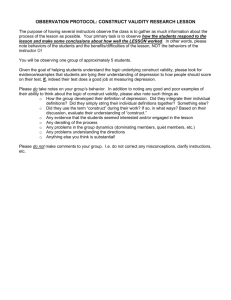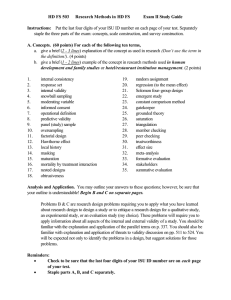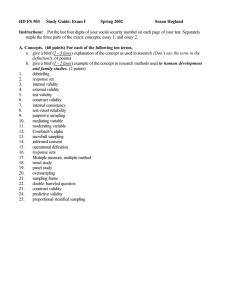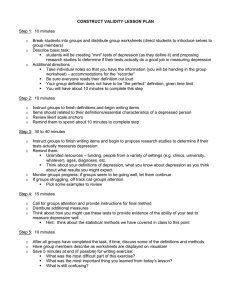Document 11897432
advertisement
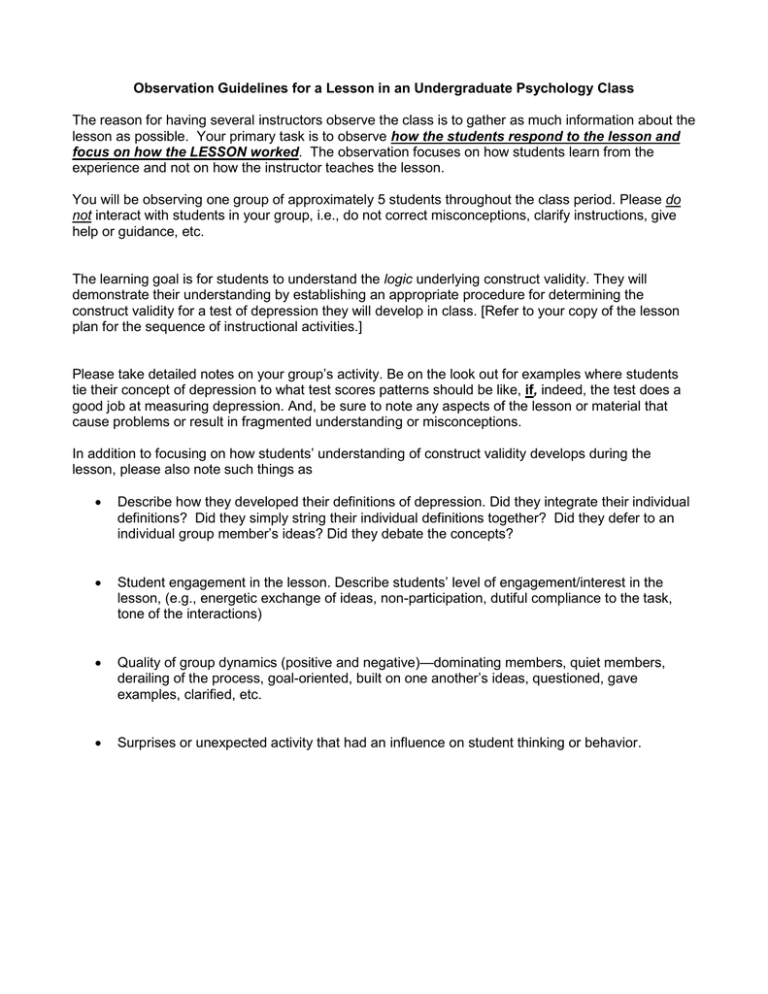
Observation Guidelines for a Lesson in an Undergraduate Psychology Class The reason for having several instructors observe the class is to gather as much information about the lesson as possible. Your primary task is to observe how the students respond to the lesson and focus on how the LESSON worked. The observation focuses on how students learn from the experience and not on how the instructor teaches the lesson. You will be observing one group of approximately 5 students throughout the class period. Please do not interact with students in your group, i.e., do not correct misconceptions, clarify instructions, give help or guidance, etc. The learning goal is for students to understand the logic underlying construct validity. They will demonstrate their understanding by establishing an appropriate procedure for determining the construct validity for a test of depression they will develop in class. [Refer to your copy of the lesson plan for the sequence of instructional activities.] Please take detailed notes on your group’s activity. Be on the look out for examples where students tie their concept of depression to what test scores patterns should be like, if, indeed, the test does a good job at measuring depression. And, be sure to note any aspects of the lesson or material that cause problems or result in fragmented understanding or misconceptions. In addition to focusing on how students’ understanding of construct validity develops during the lesson, please also note such things as Describe how they developed their definitions of depression. Did they integrate their individual definitions? Did they simply string their individual definitions together? Did they defer to an individual group member’s ideas? Did they debate the concepts? Student engagement in the lesson. Describe students’ level of engagement/interest in the lesson, (e.g., energetic exchange of ideas, non-participation, dutiful compliance to the task, tone of the interactions) Quality of group dynamics (positive and negative)—dominating members, quiet members, derailing of the process, goal-oriented, built on one another’s ideas, questioned, gave examples, clarified, etc. Surprises or unexpected activity that had an influence on student thinking or behavior. CONSTRUCT VALIDITY Observer Reactions to the Lesson Now that you have observed the lesson, please answer the following questions. Totally Disagree Totally Agree 1. All members participated in the process 1 2 3 4 5 6 7 2. The group was able to stay on task during the lesson (i.e., did not derail or discuss irrelevant information) 1 2 3 4 5 6 7 3. The group seemed confused about the technical aspects of the subject matter 1 2 3 4 5 6 7 4. The group seemed confused about the concepts the lesson was addressing 1 2 3 4 5 6 7 5. The group seemed to understand the concept of construct validity 1 2 3 4 5 6 7 6. The group seemed to understand the logic of construct validity 1 2 3 4 5 6 7 7. Given your observations, what aspects of the lesson need to be changed? How could the lesson be improved? 8. What aspects of the lesson should remain the same? What worked well? Please bring a completed copy of this form to the debriefing meeting where we will discuss the lesson.
